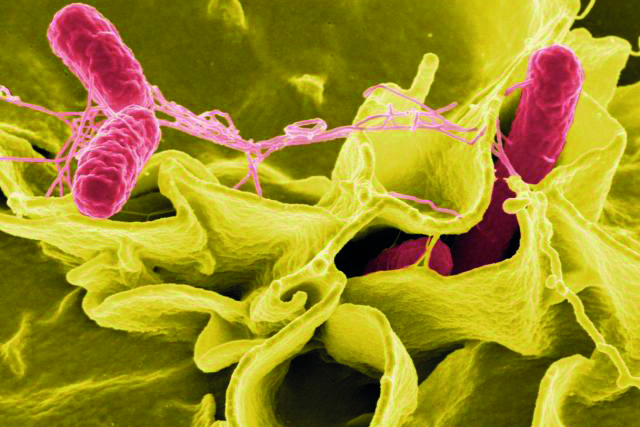
Wikimedia Commons / NIAID
The World Health Organization (WHO) has drawn up a list of families of bacteria that pose the greatest risk to human health and which should be targeted by drug companies when developing new antibiotics.
The global health agency has given the bacteria a ‘critical’, ‘high’ or ‘medium’ ranking according to the urgency of the need for new antibiotics (see box: ‘WHO priority pathogens list for R&D of new antibiotics’).
Marie-Paule Kieny, assistant director-general, health systems and innovation at the WHO, said on 27 February 2017 that the WHO had taken into account four factors when drawing up the list: the level of resistance to existing treatment, mortality rates, prevalence of infections in the community and the burden on the healthcare system.
Bacteria with a critical status include multi-drug resistant bacteria that pose a particular threat in hospitals and which have a high mortality rate associated with, for example, transfusions and chemotherapy treatment. The bacteria in this list include Acinetobacter, Pseudomonas and various Enterobacteriaceae, such as Klebsiella, Escherichia coli, Serratia and Proteus.

Source: WHO Pierre Albouy
Marie-Paule Kieny, assistant director-general, health systems and innovation at the WHO says that “just when antibiotic resistance is particularly alarming… the pipeline is practically dry”
High priority is given to drug-resistant bacteria responsible for infections such as salmonella and gonorrhoea, as well as Helicobacter pylori.
Bacteria given a ‘medium’ ranking include those that can still be successfully treated with existing antibiotics.
“Just when antibiotic resistance is particularly alarming… the pipeline is practically dry,” Kieny said, adding that she hoped the list would “spur” governments to promote relevant research in both the public and private sectors.
“With this list we are asking governments to commit funds to research and development into antibiotic resistance now in order to reduce the amount of resources they will need to spend later when resistance to antibiotics develops into an even bigger crisis.”
WHO priority pathogens list for R&D of new antibiotics
Priority 1: Critical
Acinetobacter baumannii (carbapenem-resistant)
Pseudomonas aeruginosa (carbapenem-resistant)
Enterobacteriaceae (carbapenem-resistant, ESBL-producing strains)
Priority 2: high
Enterococcus faecium (vancomycin-resistant)
Staphylococcus aureus (meticillin-resistant, vancomycin-intermediate and resistant)
Helicobacter pylori (clarithromycin-resistant)
Campylobacter spp. (fluoroquinolone-resistant)
Salmonellae (fluoroquinolone-resistant)
Neisseria gonorrhoeae (cephalosporin-resistant, fluoroquinolone-resistant)
Priority 3: medium
Streptococcus pneumoniae (penicillin-non-susceptible)
Haemophilus influenzae (ampicillin-resistant)
Shigella spp. (fluoroquinolone-resistant)
Source: World Health Organization
There is also a need for public health authorities to work closely with the drug industry, she said. “That is why this list of priority bacteria is so important so that they [the drug industry] know what the expectations are of public health.”
Kieny highlighted the work being done in the UK and a recommendation by Lord O’Neill, chair of the government’s review on antimicrobial resistance, whose report, ‘Tackling drug-resistant infections globally’, was published in May 2016. In the report, O’Neill called for new incentives to encourage the pharmaceutical industry to focus on developing new antibiotics.
The report said that the government should consider changing the “purchase and distribution systems for antibiotics, to find ways to support better rewards for innovation while helping to avoid over-use of a new product”.
Kieny said another key issue is that drug development has traditionally focused on “broad antibiotics” but the current need was to “focus on antibiotics for a much smaller range of bacteria”.
She said: “If it’s possible to deadlock antibiotics which are specific and exclusively address critical pathogens that would be welcome.”
Publication of the list, which deliberately excludes drug-resistant bacteria that cause tuberculosis because that is the focus of other campaigns, is the latest move by the WHO in its fight against antibiotic resistance.
The World Health Assembly endorsed a global action plan on antimicrobial resistance, including antibiotic resistance, in May 2015.
That plan commits to improving awareness and understanding of antimicrobial resistance, strengthening surveillance and research, reducing the incidence of infection, optimising the use of antimicrobial medicines and ensuring sustainable investment in countering antimicrobial resistance.


